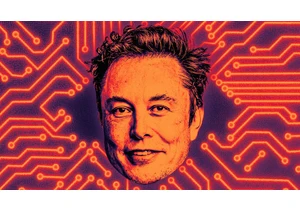The AI search firm Perplexity routinely lets users try out state-of-the-art large language models on its site, but the company moved quickly to put Chinese company DeepSeek’s new R1 model front and center in its user interface. That offers users a chance to find out what the buzz is all about, without sending their data through the DeepSeek app, which is hosted in China.
While some AI thought leaders such as Thrive Capital’s Josh Kushner, Scale AI’s Alexander Wang, and Anduril’s Palmer Luckey hurried to debunk or downplay DeepSeek’s achievements, Perplexity’s CEO Aravind Srinivas believes the Chinese company’s models are something special. “In the past few years, there have been a handful of revolutionary moments in AI that have transformed the landscape,” Perplexity cofounder and CEO Aravind Srinivas wrote in a subscriber email Tuesday. “I wholeheartedly believe that this is yet another moment.”
Users of Perplexity’s free and premium tiers can now choose to use DeepSeek via a menu button within the search bar. (Users can also select OpenAI’s o3 mini model.) “It’s one of the core models,” says Perplexity chief business officer Dmitry Shevelenko. “And what’s really neat about it is we’ve also developed a user interface . . . where you can actually see the chain of thought, so you can actually see how the model is thinking in real time, and that’s something that was never possible before.”
Because DeepSeek operates within the People’s Republic of China’s regulatory framework, the company had to prevent its models from talking about politically sensitive topics, such as the Tiananmen Square protests. Perplexity was able to remove those guardrails from the open-source version of DeepSeek-R1.
Perplexity also says any user data shared with the chatbot stays with the company’s servers in the U.S. and Canada; nothing is shared with DeepSeek or China.
Of the models available on Perplexity, DeepSeek R1 is unique in that it shows the “chain of thought” the LLM followed to reach an answer. Some of the innovations the DeepSeek researchers put into its models were driven by a need to economize on computing power. The company said it trained its models, for example, using less-powerful Nvidia H800 chips after the U.S. chip bans cut off access to Nvidia’s most powerful GPUs. The end result was the creation of models that show state-of-the-art intelligence while requiring far less computing power than comparable models to run.
That’s good for Perplexity. “There are efficiencies,” says Shevelenko. “I mean, I think we’re still too early to know the exact inference cost breakdown, but just the fact that it’s open-source and you’re not paying the private model provider, that’s already the major efficiency.”
Accedi per aggiungere un commento
Altri post in questo gruppo

As Elon Musk announced plans over the Fourth of July weekend to establish a third political party,

Dolores Ballesteros, a Mexico-based mother of two, was getting desperate. Her 6-year-old son kept hitting his brother, age 3, and seemed angry at her all the time. No matter what she did, she coul

Rarely has Silicon Valley experienced a more profound period of transformation than it has in the past handful of years. The big VC boom of 2020–2021. The great VC hangover starting in 2022. The g

A YouTube executive needed only 27 minutes to make the case that the company is taking over all aspects of how people create and consume video online.
That was the length of a recent tal

Every time I read about another advance in AI technology, I feel like another figment

Racist AI-generated videos are going viral on

Scientists are tracking a large gas planet experiencing quite a quandary as it orbits extremely close to a young star – a predicament never previously observed.
This exoplanet, as
